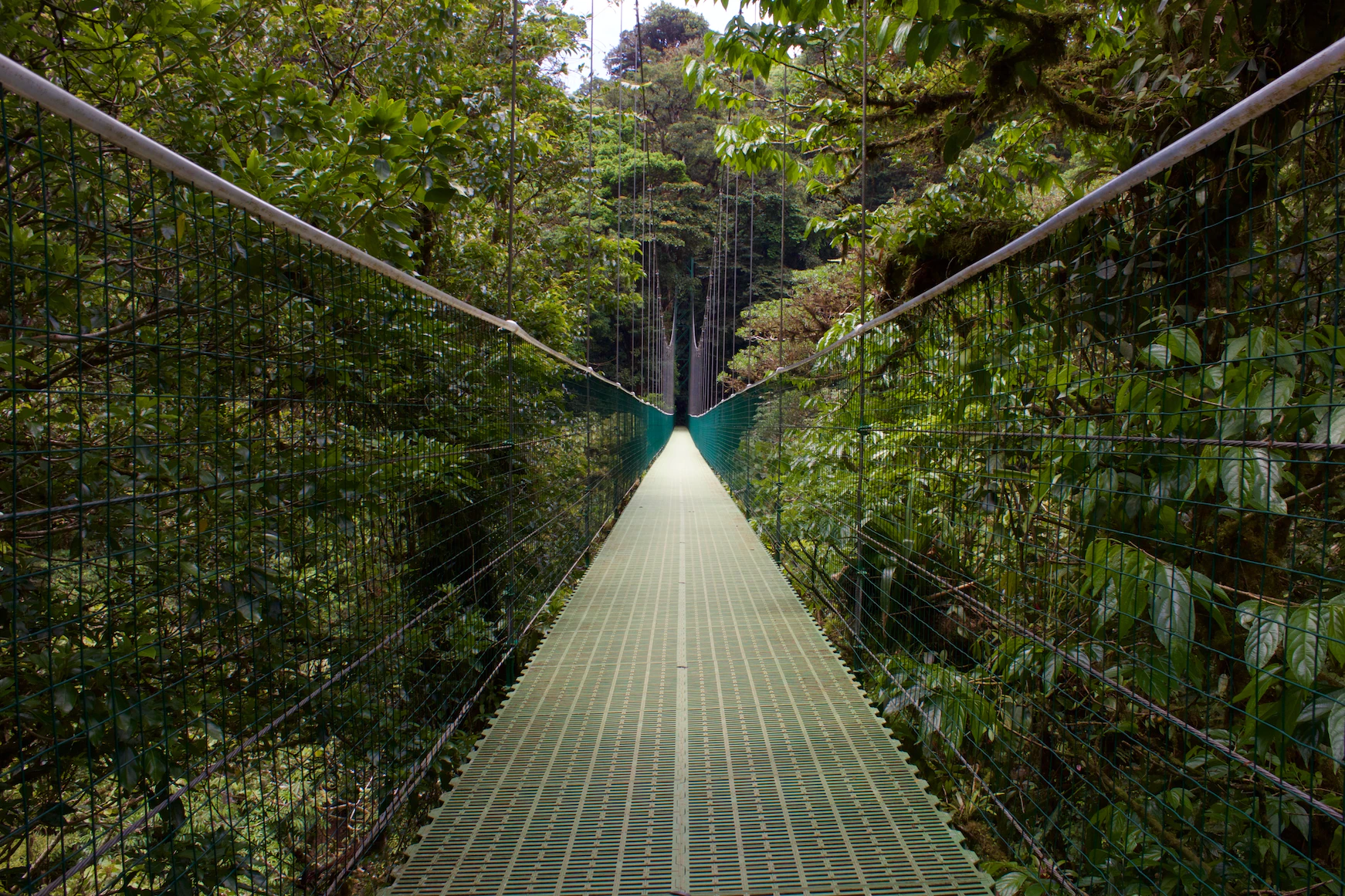In the Monteverde cloud forest in central Costa Rica, dense fog among the lush vegetation is becoming increasingly unusual and the temperature is rising every year due to climate change.
Where you should hear the incessant dripping of condensed water between the treetops, now you hear the rustle of fallen branches as tourists pass through dry trails that should be waterlogged.
The forest resists, with an infinite range of greens, before the global increase of the temperatures and the decrease of the humidity, but the cloudiness that always embraced it is more and more dispersed or practically nonexistent, says resigned the naturalist guide Andrey Castrillo.
“The forest should feel cool,” he says. “We should be hearing drops falling from all over the forest and that doesn’t happen anymore. It happens in the rainiest and windiest seasons, where it still holds a little bit,” emphasizes the 24-year-old guide.
“Here the sun is not known, or was not known. We used to have around 30 sunny days a year. Today we have more than 130,” adds Castrillo.
The Monteverde private nature reserve is 1,400 meters above sea level and comprises 14,200 hectares of protected area. It is home to 100 species of mammals, 400 species of birds and 1,200 species of amphibians.
This particular forest ecosystem comprises 1% of the world’s territory of tropical or subtropical zones in mountainous locations and with unique atmospheric conditions to allow cloud cover.
“Cloud cover at surface level tends to form from humidity saturation above 90% accompanied by temperatures generally ranging between 14 and 18 degrees (Celsius),” researcher Ana María Durán, of the University of Costa Rica’s Environmental Pollution Research Center, she explains.
The weather station of the University of Costa Rica in Monteverde indicates that since 2017 the average temperature has ranged between 26.82°C maximum and 4.5°C minimum.
It’s sad
For more than 20 years Durán visited Monteverde, in the province of Puntarenas, about 140 km northwest of the capital San José.
The “almost permanent” cloud cover that characterizes this ecosystem creates the sensation of “practically walking among the clouds,” says Durán, 38.
You should barely be able to see a meter beyond the trail, but now you can see the depth of the forest on a morning with more than 25°C and a clear, cloudless blue sky.
Tourists thank the weather as they explore the forest dressed in regatta shirts, shorts and sandals; instead of wearing boots and raincoats as would usually be necessary in the cloud forest.
According to these experts, climate change is also affecting Monteverde and the cloudiness that used to be generated and maintained between the treetops is now slightly higher than the mountain peaks.
“The cloud base is no longer at the surface, but we are starting to see it higher and higher,” explains Durán.
“Arriving in Monteverde and finding such dry conditions and not in the clouds, which I saw for example 20 years ago when I began to visit the ecosystem, obviously gives a very great sadness”, emphasizes the researcher saddened.
Species extinction
Higher temperatures, lower humidity and higher radiation are clearing Monteverde of clouds and increasing the threat to species of flora and fauna.
The moss is drying on the bark of the huge trees, the rivers have turned into streams and amphibians are the first species to be affected by climate change.
Biologist Andrea Víncent, a professor at the University of Costa Rica, told AFP that the water imbalance is “very large”, as there is less water than the ecosystem needs. “The decline of amphibians in cloud forests can be a warning sign,” she says.
For example, the “Incilius periglenes”, known as the golden toad or Monteverde toad, already accounted for this and is considered an extinct species since 2019, according to the Red List of Threatened Species of the International Union for Conservation of Nature.
“There are going to be many extinctions” with climate change, warns the 42-year-old biologist. “A cloud forest that no longer has a cloud formation is going to disappear, there is no alternative,” Víncent laments.
For that reason, she calls for an attack on this “disheartening scenario” generated by climate change.
“Ecosystems are resilient and if we make an effort to stop climate change, perhaps the cloud forests will not return in what (our generation) has left of our lives. But maybe they will for the next generations,” says Víncent.

